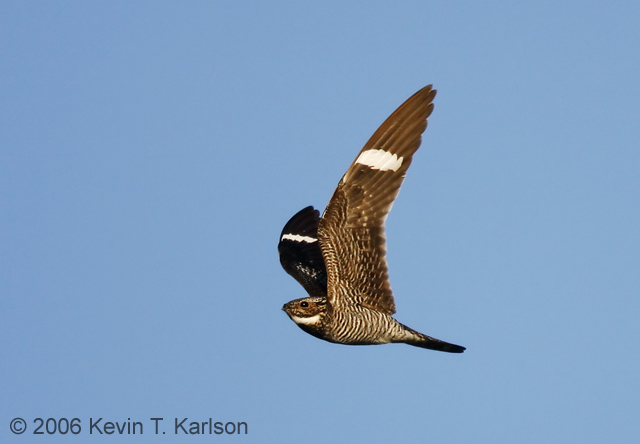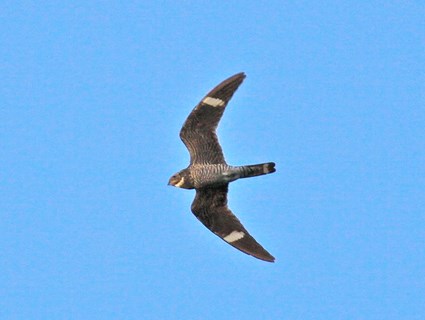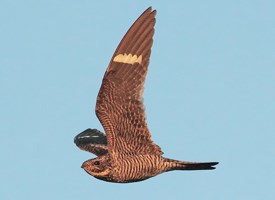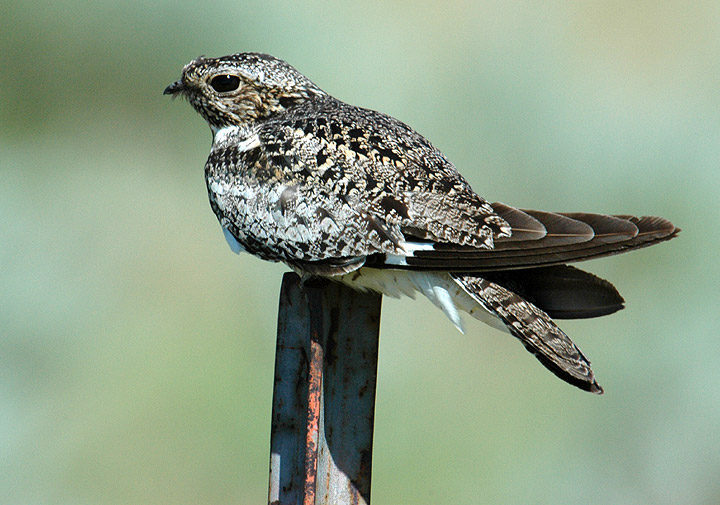
Chordeiles minor
SUBFAMILY
Chordeilinae
TAXONOMY
Caprimulgus minor J.R. Forster, 1771, South Carolina. Nine
subspecies.
OTHER COMMON NAMES
English: Nighthawk, American or booming nighthawk; French:
Engoulevent d’Amйrique; German: Falkennachtschwalbe;
Spanish: Aсapero Yanqui.
PHYSICAL CHARACTERISTICS
8.7–9.7 in (22–25 cm); 1.4–3.8 oz (40–107 g). Dark brown,
buff, grayish white, and cinnamon cryptic coloration. Sexually
dimorphic.
DISTRIBUTION
Breeds over much of North and Central America from Canada
to Panama; winters in South America from Ecuador to northern
Argentina.
HABITAT
Mainly in open habitats, including woodland clearings, prairies,
savannas, sand dunes, and cities.
BEHAVIOR
Active from well before dusk until after dawn, often flying high
in air. Commonly in flocks outside breeding season, sometimes
of up to a thousand birds. Displaying male makes booming
sound as air rushes through primaries during aerial dive.
FEEDING ECOLOGY AND DIET
Catches diet of insects mainly on wing during continuous
hawking flight; regularly takes insects that have been attracted
to street lights.
REPRODUCTIVE BIOLOGY
Unlined nest site on ground (or flat roof of building) with
clutch of two eggs. Incubation usually by female for a period of
18–20 days. Young have cryptically patterned down, are fed by
both parents, and fledge at 25–30 days.
CONSERVATION STATUS
Not threatened.
SIGNIFICANCE TO HUMANS
More often noticed by humans than most other nightjars in
North America because of habit of nesting on flat roofs of
buildings in towns and cities and activity and calls during twilight
or even daylight.
Other popular Animals
Photo Gallery of - Common nighthawk




 Animalia Life
Animalia Life